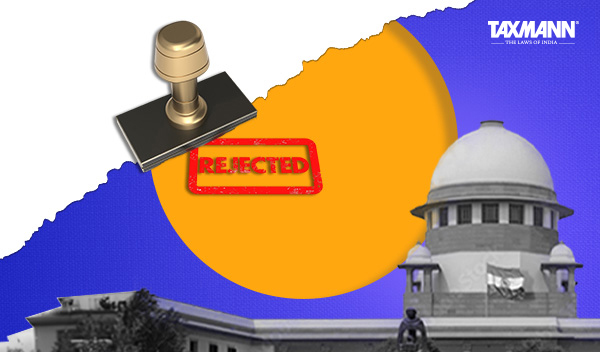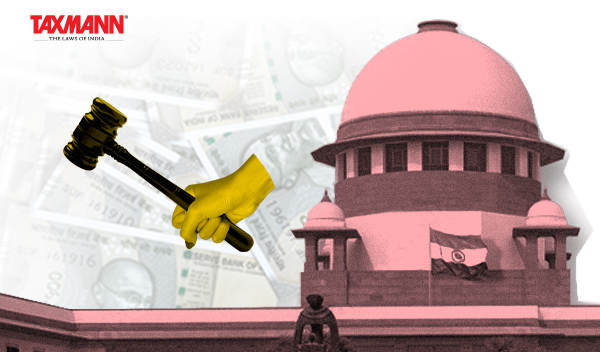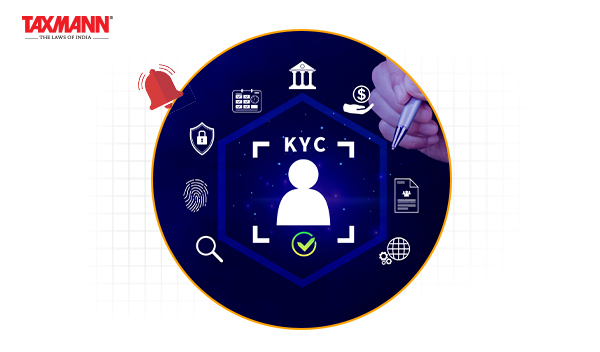The post Overview of Digital Personal Data Protection Act (DPDP Act) 2023 appeared first on Taxmann Blog.
]]>
The Digital Personal Data Protection Act, 2023 (DPDP Act) is India's first comprehensive data protection law, enacted on August 11, 2023. It establishes a legal framework for the processing of digital personal data, recognising individuals' rights to protect their personal data while allowing for lawful data processing.
Table of Contents
- Introduction
- Legislative Genesis
- Seven Foundational Principles
- Territorial & Material Scope
- Key Definitions
- Rights of Data Principals
- Obligations of Data Fiduciaries
- Consent & “Legitimate Uses”
- Cross‑Border Transfer
- Regulatory Architecture
- Penalty Framework
- Interplay with Other Laws
- Timeline to Compliance
- Conclusion
Check out Taxmann's Digital Personal Data Protection Act 2023 with Draft Rules – Bare Act with Section Notes which offers a robust framework for India's data privacy landscape. It clarifies rights and safeguards for Data Principals, details obligations for Data Fiduciaries, and highlights recent legislative updates from statutes like the IT Act and RTI Act. Comprehensive Section Notes and FAQs delve into key principles such as consent and cross-border transfers, simplifying complex provisions for easy reference. The book's structured approach, with illustrations, indexes, and a clear layout, caters to legal practitioners, corporate counsels, regulators, students, and IT professionals.
1. Introduction
India’s Digital Personal Data Protection Act, 2023 (DPDP Act) is the Republic’s first dedicated statute on personal‑data privacy. Enacted on 11 August 2023 and awaiting phased commencement, the Act fulfils two constitutional imperatives –
- Protect the fundamental right to privacy (Justice K.S. Puttaswamy v. Union of India, 2017).
- Permit legitimate data processing for economic development, good governance and national security.
Replacing the patchwork rules that previously sat under the Information Technology Act, 2000, the DPDP Act introduces clear rights for individuals (Data Principals) and corresponding duties for organisations that determine the purpose and means of processing (Data Fiduciaries).
This overview distils the Act’s legislative background, guiding principles, territorial reach, individual rights, fiduciary obligations, enforcement architecture, penalty matrix and interplay with other laws.
2. Legislative Genesis
| Milestone | Description |
| 2017 | Supreme Court declares privacy a fundamental right. Government appoints Justice B.N. Srikrishna Committee. |
| 2018 | Committee submits report “A Free and Fair Digital Economy” and Draft Personal Data Protection Bill. |
| 2019 – 2021 | Successive Bills introduced; Joint Parliamentary Committee proposes 2021 version, then withdrawn. |
| 03 Aug 2023 | Digital Personal Data Protection Bill, 2023, tabled in Lok Sabha. |
| 09 Aug 2023 | The bill passes both Houses. |
| 11 Aug 2023 | Presidential assent—DPDP Act (No. 22 of 2023). Commencement to follow the notified provisions. |
3. Seven Foundational Principles
The statute expressly adopts seven privacy principles that guide every substantive obligation –
- Consent, Lawfulness & Transparency – Personal data shall be process only upon free, inform, and specific consent of individual or another lawful ground.
- Purpose Limitation – personal data shall be processed strictly for the stated purpose.
- Data Minimisation – Only such data shall be collected as is necessary and proportionate to specified purpose of processing.
- Accuracy – Reasonable efforts must be made to ensure that personal data is accurate and kept up to date.
- Storage Limitation – erase data once the purpose ends or the retention law expires.
- Reasonable Security Safeguards – Appropriate technical and organisational measures shall be implemented to ensure confidentiality, integrity, and availability of personal data.
- Accountability – Entities processing personal data must be responsible for compliance and adjudicatory penalties in case of breach.
Every right or duty in later chapters flows from these axioms.
4. Territorial & Material Scope
4.1 Processing inside India
Any digital personal data collected online or digitised later, processed in India, falls squarely under the DPDP Act.
4.2 Extra‑territorial reach
Processing outside India is also covered if it relates to offering goods or services to, or profiling of, individuals within India. Global businesses hosting servers abroad cannot escape compliance if they target Indian users.
4.3 Exclusions
The Act does not apply to –
- Purely personal or domestic processing by an individual.
- Personal data made public by the individual herself or under statutory mandate.
- Non‑digital data that is never digitised.
- Government agencies are exempted for reasons of sovereignty, security, or public order (Section 17).
5. Key Definitions
| Term | Meaning (Section 2) |
| Data Principal | Individual to whom personal data relates; for a child (< 18 years), the parent/guardian acts instead. |
| Data Fiduciary | A person (natural/juristic) who alone or in conjunction with others, determines the purpose and means of processing personal data. |
| Data Processor | Person who processes personal data on behalf of a Data Fiduciary. |
| Significant Data Fiduciary (SDF) | Any Data Fiduciary designated by the Central Govt. based on factors such as volume/sensitivity, risk to individual rights, etc. |
| Personal Data Breach | Unauthorised processing or accidental disclosure/alteration/loss of personal data that compromises confidentiality, integrity or availability of data. |
6. Rights of Data Principals
The Act grants individuals four core rights (plus the right to nominate a representative) –
- Right to Information (Access) about personal data – confirmation and summary of personal data being processed and to whom it is shared.
- Right to Correction/Update/Erasure of personal data – rectify inaccurate or misleading data, complete incomplete data and update personal data. Also, erase data once the purpose ends or consent is withdrawn (subject to legal-retention carve-outs).
- Right to Grievance Redressal – complain first to the Fiduciary and, if unsatisfied, escalate to the Data Protection Board of India.
- Right to nominate – Nomination in the event of Death or Incapacity of Data Principal to exercise his/her Rights.
These rights are actionable, time‑bound and enforceable via penalties.
7. Obligations of Data Fiduciaries
Every Data Fiduciary must—
- Obtain valid and informed consent from the Data principal with prior notice in clear and plain language; enable easy withdrawal of such consent
- Adhere to the principles of purpose limitation (processing only for the specified purpose) and data minimisation (collecting only necessary data).
- Ensure the accuracy of personal data and implement appropriate (technical & organisational controls).
- Respect Data‑Principal rights within prescribed timelines.
- Notify the Data Protection Board of India and affected individuals “as soon as practicable” after a personal‑data breach.
Additional duties for Children’s data – Parental consent, no behavioural tracking or targeted advertising, and no processing detrimental to a child’s well‑being.
Additional duties for SDFs – Appoint an Indian‑based Data Protection Officer, conduct annual independent audits, perform compulsory DPIA for high-risk processing, record‑keeping and comply with further safeguards as notified by the Government.
8. Consent & “Legitimate Uses”
Consent must be free, informed, specific, unambiguous, unconditional and given by clear affirmative action. The Act prohibits the use of dark‑pattern consent and allows for withdrawal at any time.
Processing without consent (Section 7) is permitt only in the following tightly‑defined situations—
- When Data Principal voluntarily provides data and raises no objection.
- For State functions related to providing subsidies, benefits, licences, etc.
- Compliance with laws, court orders or judgments.
- In Medical and epidemic emergencies.
- In Disaster management or situations involving the breakdown of public order.
- For employment-related processing that is proportionate to the purpose.
9. Cross‑Border Transfer
Unlike earlier drafts, the DPDP Act adopts a “black‑list” approach – it allows personal data to flow to any foreign country except those specifically notified as restricted by the Central Government. Contractual and security safeguards remain advisable, and certain sensitive‑sector restrictions (e.g., payments) continue under the purview of sectoral regulators.
10. Regulatory Architecture
Data Protection Board of India (DPBI).
- The DPBI is an adjudicatory authority and is responsible for addressing complaints and investigating breaches.
- It is headed by the Chairperson and consists of Members.
- The Board Investigates breaches, decides complaints, issues binding directions, and levies monetary penalties.
- Decisions made by DPBI can be appeal to Telecom Disputes Settlement and Appellate Tribunal (TDSAT), then to the Supreme Court.
Voluntary Undertaking.
A Fiduciary under inquiry may offer a remedial undertaking; DPB may accept, monitor and enforce it in lieu of full adjudication.
11. Penalty Framework
| Contravention | Maximum Penalty (₹) |
| Lack of reasonable security safeguards → breach | 250 crore |
| Failure to inform DPB/Data Principals of a breach | 200 crore |
| Violation of children-specific provisions | 200 crore |
| Non‑compliance by SDF with extra duties | 150 crore |
| Breach of any other provision of the Act or Rules | 50 crore |
| Frivolous grievance or complaint by Data Principal | 10,000 |
DPB must consider gravity, duration, gain/loss, nature of data, and mitigating actions before quantifying any fine.
12. Interplay with Other Laws
- IT Act 2000 – Section 43A of the Information Technology Act, 2000 shall be omitted. The SPDI Rules have been superseded by the DPDP Act.
- Sectoral Regulations – RBI, IRDAI, SEBI retention or localisation mandates coexist; if simultaneous compliance is impossible, DPDP prevails to the extent of conflict.
- Upcoming Digital India Act – Expected to dovetail with DPDP to modernise intermediary and cybersecurity rules.
13. Timeline to Compliance
The Government will notify staggered commencement dates and allied Rules (breach‑report format, notice language standard, grievance window, etc.). Businesses should—
- Map personal data flows and classify processing purposes.
- Gap‑assess current privacy notices, consent screens and security controls.
- Draft a retention schedule and deletion workflows.
- Set up a rights & grievance portal; train staff.
- If likely to be an SDF, appoint a Data‑Protection Officer and prepare for annual audit.
14. Conclusion
The DPDP Act ushers India into the front rank of jurisdictions with omnibus data‑protection legislation. For individuals, it converts privacy from an abstract right into actionable powers. For organisations, it imposes rigorous, enforceable duties—with penalties of up to ₹250 crore—for failure to process personal data responsibly.
The post Overview of Digital Personal Data Protection Act (DPDP Act) 2023 appeared first on Taxmann Blog.
]]>The post Fair Valuation in Mutual Funds – Principles and Methods appeared first on Taxmann Blog.
]]>
Fair Valuation in Mutual Funds refers to the process of valuing the assets of a mutual fund scheme based on their realizable market value, rather than historical cost or arbitrary pricing, to ensure that all investors—both existing and incoming—are treated equitably. It involves applying transparent and consistent valuation methodologies, especially in cases where market prices are unavailable or unreliable (e.g., illiquid or non-traded securities).
Table of Contents
Check out NISM X Taxmann's Mutual Fund Distributors which covers the fundamentals of mutual funds, regulatory frameworks, and best distribution practices. Developed by NISM in collaboration with industry experts, it aligns with SEBI's requirements and offers practical insights into investor services, taxation, and compliance. Catering to aspiring distributors, AMC professionals, advisors, and students, it spans topics from basic investment principles to advanced operational procedures like KYC and SIPs. The December 2024 edition, published by Taxmann, ensures updated, reliable content for effectively navigating and excelling in the mutual fund domain.
1. Fair Valuation Principles
An investor in a mutual fund scheme is the beneficial owner of the units one has bought. Expand this further, and it means that the ownership of the mutual fund scheme is collectively in the hands of all the investors at any point in time. At the same time, the investors can sell their units and new investors can buy. Thus, periodically, the ownership could also change. In such a case, it becomes very important that any investor in the scheme gets a fair price for one’s investments.
In order to ensure such fair treatment to all investors, SEBI has laid down certain fair valuation principles.
The asset management companies are required to compute and carry out a valuation of investments made by its scheme(s) in accordance with the investment valuation norms specified in the Eighth Schedule of SEBI (Mutual Funds) Regulations, 1996. The primary objective behind the introduction of these principles was to ensure fair treatment to all investors including existing investors as well as investors seeking to purchase or redeem units of mutual funds in all schemes at all points of time. At the same time, the valuation principles also address the mispricing risk and reduce the vulnerability of short-term debt-oriented schemes to redemption pressure.
The 10 principles as laid out by SEBI are as under –
Principle No. 1
The valuation of investments shall be based on the principles of fair valuation i.e., valuation shall be reflective of the realizable value of the securities/assets. The valuation shall be done in good faith and in true and fair manner through appropriate valuation policies and procedures.
Principle No. 2
The policies and procedures approved by the Board of the Asset Management Company shall identify the methodologies that will be used for valuing each type of securities/assets held by the mutual fund schemes. Investment in new type of securities/assets by the mutual fund scheme shall be made only after establishment of the valuation methodologies for such securities with the approval of the Board of the asset management company.
Principle No. 3
The assets held by the mutual funds shall be consistently valued according to the policies and procedures. The policies and procedures shall describe the process to deal with exceptional events where market quotations are no longer reliable for a particular security.
Principle No. 4
The asset management company shall provide for the periodic review of the valuation policies and procedures to ensure the appropriateness and accuracy of the methodologies used and its effective implementation in valuing the securities/assets. The Board of Trustee and the Board of asset management company shall be updated of these developments at appropriate intervals. The valuation policies and procedures shall be regularly reviewed (at least once in a Financial Year) by an independent auditor to seek to ensure their continued appropriateness.
Principle No. 5
The valuation policies and procedures approved by the Board of asset management company should seek to address conflict of interest.
Principle No. 6
Disclosure of the valuation policy and procedures (with regard to valuation of each category of securities/assets where the scheme will invest, situation where these methods will be used, process and methodology and impact of implementation of these methods, if any) approved by the Board of the asset management company shall be made in Statement of Additional Information, on the website of the asset management company/mutual fund and at any other place where the Board may specify to ensure transparency of valuation norms to be adopted by asset management company.
Principle No. 7
The responsibility of true and fairness of valuation and correct NAV shall be of the asset management company, irrespective of disclosure of the approved valuation policies and procedures i.e., if the established policies and procedures of valuation do not result in fair/appropriate valuation, the asset management company shall deviate from the established policies and procedures in order to value the assets/securities at fair value provided that – any deviation from the disclosed valuation policy and procedures may be allowed with appropriate reporting to Board of Trustees and the Board of the asset management company and appropriate disclosures to investors.
Principle No. 8
The asset management company shall have policies and procedures to detect and prevent incorrect valuation.
Principle No. 9
Documentation of rationale for valuation including inter scheme transfers shall be maintained and preserved by the asset management company as per Regulation 50 of SEBI (Mutual Fund) Regulations, 1996 to enable audit trail.
Principle No. 10
In order to have fairness in the valuation of debt and money market securities, the asset management company shall take into consideration prices of trades of same security or similar security reported at all available public platform.
In addition to the above, a mutual fund may value its investments according to the Valuation Guidelines notified by SEBI. In case of any conflict between the Principles of Fair Valuation and Valuation Guidelines, the Principles of Fair Valuation detailed above shall prevail.
1.1 Valuation
A mutual fund scheme invests the investors’ money in a portfolio of securities created and managed based on the investment objective and strategy of the scheme. The investments include securities, money market instruments, privately placed debentures, securitised debt instruments, gold and gold related instruments, real estate assets and infrastructure debt instruments and assets. The NAV of the scheme will depend upon the value of this portfolio, which in turn, depends upon the value of the securities held in it. The valuation of these securities to determine the net asset value has to be done in accordance with the valuation guidelines laid down by SEBI and AMFI. This includes the following guidelines –
- Traded Securities other than money market and debt securities –
- The securities shall be valued at the last quoted closing price on the stock exchange.
- When the securities are traded on more than one recognised stock exchange, the securities shall be valued at the last quoted closing price on the stock exchange where the security is principally traded. It would be left to the asset management company to select the appropriate stock exchange, but the reasons for the selection should be recorded in writing. There should, however, be no objection for all scrips being valued at the prices quoted on the stock exchange where a majority in value of the investments are principally traded.
- Once a stock exchange has been selected for valuation of a particular security, reasons for the change of the exchange shall be recorded in writing by the asset management company.
- When on a particular valuation day, security has not been traded on the selected stock exchange, the value at which it is traded on another stock exchange may be used.
- When a security is not traded on any stock exchange on a particular valuation day, the value at which it was traded on the selected stock exchange or any other stock exchange, as the case may be, on the earliest previous day may be used provided such date is not more than thirty days prior to the valuation date.
- Non-traded Securities’ other than money market and debt securities) –
- When a security is not traded on any stock exchange for a period of thirty days prior to the valuation date, the scrip must be treated as a ‘non-traded’ scrip.
- Non-traded securities shall be valued “in-good faith” by the asset management company on the basis of appropriate valuation methods based on the principles approved by the Board of the asset management company. Such decision of the Board must be documented in the Board minutes and the supporting data in respect of each security so valued must be preserved. The methods used to arrive at values “in-good faith” shall be periodically reviewed by the trustees and reported upon by the auditors as “fair and reasonable” in their report on the annual accounts of the fund. For the purpose of valuation of non-traded securities61, the following principles should be adopted —
-
-
- equity instruments shall generally be valued on the basis of capitalization of earnings solely or in combination with the net asset value, using for the purposes of capitalization, the price or earnings ratios of comparable traded securities and with an appropriate discount for lower liquidity;
- in respect of convertible debentures and bonds, the non-convertible and convertible components shall be valued separately. The non-convertible component should be valued on the same basis as would be applicable to a debt instrument. The convertible component should be valued on the same basis as would be applicable to an equity instrument. If, after conversion, the resultant equity instrument would be traded Pari passu with an existing instrument which is traded, the value of the latter instrument can be adopted after an appropriate discount of the non-tradability of the instrument during the period preceding the conversion while valuing such instruments, the fact whether the conversion is optional should also be factored in;
- in respect of warrants to subscribe for shares attached to instruments, the warrants can be valued at the value of the share which would be obtained on the exercise of the warrant as reduced by the amount which would be payable on exercise of the warrant. A discount similar to the discount to be determined in respect of convertible debentures [as referred to above] must be deducted to account for the period which must elapse before the warrant can be exercised;
-
- Value of Gold – The gold held by a gold exchange traded fund scheme shall be valued at the AM fixing price of London Bullion Market Association (LBMA) in US dollars per troy ounce for gold having a fineness of 995.0 parts per thousand, subject to the conditions mentioned in valuation guidelines issued by SEBI in SEBI (MF Regulations), 1996.
- Value of Silver – The silver held by a silver exchange traded fund scheme shall be valued at the AM fixing price of London Bullion Market Association (LBMA) in US dollars per troy ounce for silver having a fineness of 999.0 parts per thousand subject to the conditions mentioned in valuation guidelines issued by SEBI in SEBI (MF Regulations), 19962.
2. Computation of Net Assets of Mutual Fund Scheme and NAV
2.1 Net Assets of Scheme
Let us understand the concept with a simple example.
Investors have bought 20 crore units of a mutual fund scheme at Rs. 10 each. The scheme has thus mobilized 20 crore units X Rs. 10 per unit i.e., Rs. 200 crore.
An amount of Rs. 140 crores, invested in equities, has appreciated by 10 percent.
The balance amount of Rs. 60 crore, mobilised from investors, was placed in bank deposits and money market instruments.
Interest and dividend received by the scheme is Rs. 8 crore, scheme expenses paid is Rs. 4 crore, while a further expense of Rs. 1 crore is payable.
If the above details are to be captured in a listing of assets and liabilities of the scheme, it would read as follows –
| Particulars | Amount (Rs. crore) |
| Liabilities | |
| Unit Capital (20 crore units of Rs. 10 each) | 200 |
| Profits {Rs. 8 crore (interest and dividend received) minus Rs. 4 crore (expenses paid) minus Rs. 1 crore (expenses payable)} | 3 |
| Capital Appreciation on Investments held (10 percent of Rs. 140 crore) | 14 |
| Unit-holders’ Funds in the Scheme | 217 |
| Expenses payable | 1 |
| Scheme Liabilities | 218 |
| Assets | |
| Market value of Investments (Rs. 140 crore + 10 percent) | 154 |
| Bank Deposits and money market instruments {Rs. 60 crore (original) plus Rs. 8 crore (interest and dividend received) minus Rs. 4 crore (expenses paid)} | 64 |
| Scheme Assets | 218 |
The unitholders’ funds in the scheme are commonly referred to as “net assets”. The assets of the scheme are the investments held by it. This along with the accrued income which includes dividend or interest due on securities held in the portfolio but not yet received, and receivables, such as the amount due on shares sold, constitute the total assets. The scheme may have some short-term liabilities and accrued expenses. The current liabilities include payables for securities bought and borrowings for a period not exceeding six months to meet liquidity needs.
As is evident from the table –
- Net assets include the amount originally invested, the profits booked in the scheme, as well as the appreciation in the investment portfolio.
- Net assets increase when the market prices of securities held in the portfolio increase, even if the investments have not been sold and profits realized.
- A scheme cannot show better profits by delaying payments. While calculating profits, all the expenses that relate to a period need to be considered, irrespective of whether or not the expense has been paid. In accounting language, this is called the accrual principle.
- Similarly, any income that relates to the period will boost profits, irrespective of whether or not it has been actually received in the bank account. This again is in line with the accrual principle.
2.2 Net Asset Value
In the market, when people talk of NAV, they refer to the value of each unit of the scheme.
This is equivalent to –
Unit-holders’ Funds in the Scheme (Net Assets) ÷ No. of outstanding Units
In the above example, it can be calculated as –
Rs. 217 crore ÷ 20 crore
i.e., Rs. 10.85 per unit.
An alternate formula for calculating NAV is –
(Total Assets minus Liabilities other than to Unitholders) ÷ No. of outstanding Units
i.e., (Rs. 218 crore – Rs. 1 crore) ÷ 20 crore
i.e., Rs. 10.85 per unit.
From the above, it follows that –
- Higher the interest, dividend and capital gains earned by the scheme, higher would be the NAV.
- Higher the appreciation in the investment portfolio, higher would be the NAV.
- Lower the expenses, higher would be the NAV.
The summation of these three parameters gave us the profitability metric as being equal to –
(A) + Interest income
(B) + Dividend income
(C) + Realized capital gains
(D) + Valuation gains
(E) – Realised capital losses
(F) – Valuation losses
(G) – Scheme expenses
Example 1 – Calculate the NAV given the following information –
- Value of stocks – Rs. 150 crores
- Value of bonds – Rs. 67 crores
- Value of money market instruments – Rs. 2.36 crore
- Dividend accrued but not received – Rs. 1.09 crore
- Interest accrued but not received – Rs. 2.68 crore
- Fees payable – Rs. 0.36 crore
- No. of outstanding units – 1.90 crore
NAV = (Value of stocks + Value of bonds + Value of money market instruments + Dividend accrued but not received + Interest accrued but not received – Fees payable)/No. of outstanding units
NAV = (150 + 67 + 2.36 + 1.09 + 2.68 – 0.36)/1.90 = 222.77/1.90 = Rs. 117.25
- As per Clause ‘m’ of Ninth Schedule of SEBI (Mutual Fund) Regulations (1996), in the case of real estate mutual funds schemes, investments in unlisted equity shares shall be valued as per the norms specified by the Board in this regard.
- https://www.sebi.gov.in/legal/circulars/nov-2021/norms-for-silver-exchange-traded-funds-silver-etfs-and-gold-exchange-traded-funds-gold-etfs-_54166.html and page no. 107 – https://www.sebi.gov.in/legal/regulations/aug-2021/securities-and-exchange-board-of-india-mutual-funds-regulations-1996-last-amended-on-november-09-2021-_41350.html
The post Fair Valuation in Mutual Funds – Principles and Methods appeared first on Taxmann Blog.
]]>The post Scope and Key Definitions Under DPDP Act appeared first on Taxmann Blog.
]]>
The Digital Personal Data Protection (DPDP) Act, 2023 outlines a broad yet well-defined scope to determine when and how it applies to the processing of personal data. The Act applies to the processing of digital personal data within India, regardless of whether the data was originally collected in digital form or subsequently digitised. Additionally, its territorial scope extends to entities located outside India if they process personal data in connection with offering goods or services to individuals in India or engage in profiling of Indian users.
Table of Contents
- Why Scope Matters
- Territorial Reach
- Material Scope – Digital, Not Paper
- Bright‑Line Exclusions
- Key Definitions under DPDP Act
- Extraterritorial Compliance Checklist
- Conclusion
Check out Taxmann's Digital Personal Data Protection Act 2023 with Draft Rules – Bare Act with Section Notes which offers a robust framework for India's data privacy landscape. It clarifies rights and safeguards for Data Principals, details obligations for Data Fiduciaries, and highlights recent legislative updates from statutes like the IT Act and RTI Act. Comprehensive Section Notes and FAQs delve into key principles such as consent and cross-border transfers, simplifying complex provisions for easy reference. The book's structured approach, with illustrations, indexes, and a clear layout, caters to legal practitioners, corporate counsels, regulators, students, and IT professionals.
1. Why Scope Matters
Before diving into consent, rights or penalties, an organisation must ask – Does the Digital Personal Data Protection Act (DPDP Act) 2023 apply to this activity? Section 3 of the Act sets a deliberately wide net, but also carves clear exclusions. Understanding this boundary prevents over-compliance (wasting resources on purely offline data) and under-compliance (missing extraterritorial obligations).
2. Territorial Reach
| Scenario | Covered? | Reasoning |
| Bank in Mumbai processes customer KYC data | Yes | Processing occurs in India (Section 3 (1)(a)). |
| German e‑commerce site ships to Delhi customers & stores their emails on EU servers | Yes | Processing outside India but in connection with offering goods/services to persons in India (Sec 3 (1)(b)). |
| Singapore analytics firm profiles browsing behaviour of Indian users via cookies | Yes | “Profiling” + users in India triggers the extraterritorial clause. |
| The Canadian HR BPO unit processes the payroll of US employees only | No* | Personal data of Data Principals not in India; exempt under Sec 17 (4)(d). |
* Unless the same unit separately processes Indian data, only that slice falls within scope.
3. Material Scope – Digital, Not Paper
The DPDP Act governs “digital personal data” – any personal data in digital form, whether originally collected online or later digitised (Sec 2 (h), 2 (i)). Purely paper records that never enter an electronic system remain outside.
Compliance tip – once a paper record is scanned or typed into any IT system, all subsequent processing of that file is subject to the Act.
4. Bright‑Line Exclusions
- Personal or domestic use – e.g. a family’s shared photo folder (Sec 3 (2)(a)).
- Self‑published or statutorily‑published data – résumés voluntarily posted on LinkedIn; director details in MCA21 (Sec 3 (2)(b)).
- Government exemptions – notified agencies for sovereignty, security, public order (Sec 17 (2)(a)).
- Processing for legal proceedings, law enforcement or court orders (Sec 17 (2)(b)).
- Archival, research, statistical purposes under conditions (Sec 17 (4)(a)).
Where an exemption applies, only the specified provisions lift; others (notably reasonable security) may still bind if not expressly waived.
5. Key Definitions under DPDP Act
| Term (Sec 2) | Practical Meaning |
| Data Principal | The Individual to whom personal data relates. For minors (<18 years) and persons with disabilities (requiring lawful guardianship), the parent/guardian is deemed the Data Principal. |
| Data Fiduciary | Any person (natural or legal) who alone or in conjunction with others determines the purpose and means of processing personal data”. |
| Data Processor | Any person who processes data on behalf of a data Fiduciary – e.g. cloud host, payroll vendor. |
| Personal Data | Any data about an individual who is identifiable by or in relation to such data. No separate “sensitive” category; all personal data protected uniformly. |
| Digital Personal Data | Personal data in electronic form. |
| Processing | Any automated operation or set of operations performed on digital personal data. This includes collection, storage, retrieval, use, sharing, disclosure, erasure, etc. |
| Personal Data Breach | Any Unauthorised processing or accidental disclosure, loss, alteration, loss, or access that compromises the confidentiality, integrity or availability of personal data. |
| Significant Data Fiduciary (SDF) | The fiduciary is notified by the government based on factors such as volume and sensitivity of personal data processed, risk to sovereignty and integrity of India, potential impact on electoral democracy, national security, public order or such other factors as may be prescribed. |
6. Extraterritorial Compliance Checklist
- Identify Indian Touch‑points – sales, website traffic, profiling cookies.
- Appoint an India‑facing contact – advisable even if not an SDF.
- Update privacy notice – reference applicability of DPDP Act.
- Prepare for Board inquiries – DPB can seek information cross‑border via mutual legal assistance.
- Contractual safeguards – incorporate DPDP clauses with Indian processors.
7. Conclusion
Scope analysis is the first compliance gate. If an activity falls inside the Act, the organisation must next implement consent or legitimate‑use protocols; if outside, document the rationale to evidence good‑faith assessment.
The post Scope and Key Definitions Under DPDP Act appeared first on Taxmann Blog.
]]>The post [Opinion] Allegation of Bogus Purchases – Is It Genuine? Analysis of Recent Case Laws appeared first on Taxmann Blog.
]]>
Navneet Singal – [2025] 173 taxmann.com 556 (Article)
I. Introduction
When a purchase can be considered as bogus? What documentation should be required to prove the genuineness of the transactions? The disallowance of bogus purchases has become a contentious issue that whether the entire alleged bogus purchase should be considered as disallowed expenditure or only the part of the profit embedded therein, amid the flood of recent high court decisions.
In the recent judgement of PCIT v. Drisha Impex Pvt. Ltd., PCIT v. Kanak Impex (India) Ltd., Refrigerated Distributors Pvt Ltd. v. DCIT, and PCIT v. Shree Ganesh Developers, the Hon’ble Mumbai High Court has not only defined that what is a bogus purchase with numerous examples but also critically analysed number of other case laws of the Supreme Court and other high courts in the light of different facts and circumstances. It has distinguished each and every case law that why it has taken a different view than the decision in the other cases and where the circumstances and facts of those cases are distinguishable.
Since the issue of bogus purchases is a question of fact, there has not been a consistent approach of the assessing authorities as well as courts which is primarily due to the fact-specific nature of such cases. The judgments of courts tend to vary based on the particular facts and circumstances of each case. The thumb rule which emerged from these judgements is that once a purchase is considered as bogus purchase then it is not in the jurisdiction of the assessing or judicial authorities to provide concession by considering a percentage of the purchase as disallowance u/s 69C of the Income-tax Act, 1961 (‘the Act’) and the entire amount of bogus purchase is required to be disallowed.
In this article, the author has tried to analyse the above case laws and the other cases discussed in these judgements. He has tried to define that what can be considered as a bogus purchase, what documentation should be kept to prove the genuineness of a transaction and what argument should be put forth at different stages of appellate proceedings. He has also delved his thought on the circumstances in which the rule of disallowance of only the embedded part of profit is applicable instead of the entire purchase amount.
II. What is Bogus Purchase?
A bogus purchase refers to a fraudulent transaction wherein the assessee claims to have procured goods or services, but no actual delivery or receipt takes place. Such transactions typically involve the fabrication of false invoices or bills to create the appearance of a legitimate purchase. In general parlance, the bogus purchases transactions can be of two types, i.e.,
(i) To artificially reduce gross profit, an assessee may resort to fabricating invoices or other documentation to falsely represent that purchases were made, despite no actual procurement of goods or services. This results in an inflated cost of goods sold, thereby reducing the reported gross profit.
(ii) In certain instances, an assessee may substitute genuine purchases by procuring goods from the grey market, utilizing them in the course of manufacturing or sales, while simultaneously obtaining invoices at inflated rates from accommodation bill providers. In such cases, although the goods or materials are actually received, the corresponding purchase invoices are issued by entities other than the actual suppliers.
The Hon’ble Bombay High Court, in the judgement of Kanak Impex (India) Ltd. (supra), has defined the concept of accommodation entry in the case of bogus purchase by an example.
It has mentioned in para 14 of the order, that,
“14. Before we adjudicate the issue, it is relevant to understand the concept of accommodation entry by an example. Mr. A has unaccounted cash, which he uses to buy goods for selling. However, the sales are made by cheque. Since the goods are purchased with unaccounted money, they cannot be recorded in the books of account. Therefore, the modus operandi to bring such purchases into the books of account is that Mr A will contact Mr B, an accommodation entry provider. Mr B would issue a paper invoice in the name of Mr A, and Mr A would issue a cheque to Mr B to show that the purchases have been made by cheque from Mr B. After deducting certain commission, Mr B would then withdraw the money from his bank account and return the cash so withdrawn to Mr A. By this process, the purchases made by Mr. A by unaccounted cash enter the books of account as if the purchases are made from Mr. B. However, what has actually happened is that the unaccounted money of Mr. A is shown to have entered the books of account by such a modus operandi and Mr. A gets back his unaccounted cash from Mr. B.”
Click Here To Read The Full Article
The post [Opinion] Allegation of Bogus Purchases – Is It Genuine? Analysis of Recent Case Laws appeared first on Taxmann Blog.
]]>The post Unauthorised Use of Company Car by a Former Director Justified Process u/s 452 of Companies Act, Discharge Plea Dismissed | HC appeared first on Taxmann Blog.
]]>
Case Details: Meeta Bansal v. State of West Bengal - [2025] 173 taxmann.com 463 (HC-Calcutta)
Judiciary and Counsel Details
- Ajay Kumar Gupta, J.
-
Y.J. Dastoor, Ld. Sr. Adv. for the Petitioner.
-
Ayan Bhattacharya, Somopriyo Chowdhury, Ms Nairanjana Ghosh & Anurag Modi, Advs. for the Respondent.
Facts of the Case
In the instant case, Petitioner and S were husband and wife. Both were the directors of the company. The petitioner was no more director of the company. The company filed a complaint against the petitioner under section 452 of the Companies Act, 2013.
The petitioner filed an application praying for discharge from the impugned proceedings. However, the Chief Judicial Magistrate rejected it on the ground that if any officer or employee of a company, having validly obtained possession of a company’s property, wrongfully retains it, as appeared to be the case in the instant proceeding, it would constitute an offence contemplated in Section 452 of the Act.
The petitioner then filed an instant Criminal Revisional application to quash the proceedings. It was noted that the car, which the company purchased, was in the petitioner’s custody. She was using it exclusively for her personal use. Further, since the petitioner was no more director of the company, she could not withhold the same without the permission of the Company.
High Court Held
The High Court held that it was incumbent upon the Trial Court to decide whether the petitioner wrongfully withheld the articles of the Company or not after a full-fledged trial. Accordingly, a process was issued against the petitioner after the Court had taken cognisance of the matter. After being satisfied prima facie, it seemed correct, legal, and justified and required no interference.
Thus, the lower court rejected the petition for discharge, finding no error or perversity and finding it well within its jurisdiction. Therefore, the petitioner’s prayer for discharge from the case was devoid of merit.
List of Cases Reviewed
- Abhishek v. State of Madhya Pradesh 1 2023 SCC OnLine SC 1083
- State of Haryana v. Bhajan Lal 1992 SCC (Cri) 426, 1992 Supp (1) SCC 335 [Para 15]
- Naresh Kumar & Anr. v. The State of Karnataka & Anr. 2024 INSC 196
- Madhavrao Jiwaji Rao Scindia. v. Sambhajirao Chandrojirac Angre JT 1988 (1) S.C. 279
- Jitha Sanjay and Others v. State of Kerala 2024/KER/42293 [para 18]; distinguished.
- Aniruddha Khanwalkar v. Sharmila Das 6 2024 INSC 342 [Para 19]
- Hooghly Mills Company Limited v. State of West Bengal (2020) 18 SCC 568 [ Para 21]; followed.
List of Cases Referred to
- Abhishek v. State of Madhya Pradesh 2023 SCC OnLine SC 1083 (para 1)
- State of Haryana and Others v. Bhajan Lal and Others (1) SCC 335 (para 1)
- Naresh Kumar & Anr. v. The State of Karnataka & Anr 2024 INSC 196 (para 1)
- Aniruddha Khanwalkar v. Sharmila Das & Others 2024 INSC 342 (para 4)
- Dilbag Rai v. State of Haryana and Others (2019) 16 SCC 736 (para 4)
- Alka Bapu Gund v. Prakash Kanhaiyalal Kankaria (2017) 11 SCC 108 (para 4)
- Hooghly Mills Company Limited v. State of West Bengal and Another (2020) 18 SCC 568 (para 4).
The post Unauthorised Use of Company Car by a Former Director Justified Process u/s 452 of Companies Act, Discharge Plea Dismissed | HC appeared first on Taxmann Blog.
]]>The post Order Rejecting Rectification Application Upheld as Application Was Vague and Lacked Any Substantial Contention | HC appeared first on Taxmann Blog.
]]>
Case Details: Vinay Kumar Gupta vs. State of U.P. - [2025] 173 taxmann.com 201 (Allahabad)
Judiciary and Counsel Details
- Arun Bhansali, CJ. & Kshitij Shailendra, J.
-
Aditya Pandey, for the Petitioner.
-
Ankur Agarwal, S.C. for the Respondent.
Facts of the Case
The petitioner was issued a notice under Section 61 of the CGST Act/Uttar Pradesh GST Act, to which a reply was submitted. Thereafter, an order was passed under Section 73 on the ground that the reply was not satisfactory. The petitioner filed an application for rectification of the said order under Section 161, which was dismissed by the authority on the ground that there was no justification for rectification. Aggrieved by the said rejection, the petitioner filed a writ petition before the Hon’ble High Court, contending that the impugned order was non-speaking and had been passed without affording an opportunity of hearing.
High Court Held
The Hon’ble High Court held that the nature of the application filed by the petitioner for rectification was completely vague and no contention was raised therein. It held that the authority was justified in rejecting the said application, and there was no ground to interfere with the impugned order. The writ petition was accordingly dismissed.
The post Order Rejecting Rectification Application Upheld as Application Was Vague and Lacked Any Substantial Contention | HC appeared first on Taxmann Blog.
]]>The post PVC Raincoats Being Non-Woven Products to Be Classified Under HSN 392620 and Attract GST Rate of 18% | AAR appeared first on Taxmann Blog.
]]>
Case Details: Aristocrat Industries (P.) Ltd., In re - [2025] 173 taxmann.com 371 (AAR-WEST BENGAL)
Judiciary and Counsel Details
- Dr. Tanisha Dutta & Joyjit Banik, Member
-
Vikash Dhanania, C.A Sumit Jaiwal, A/R, for the Petitioner.
Facts of the Case
The applicant, engaged in the manufacture of raincoats primarily composed of polyvinyl chloride (PVC), filed an application before the West Bengal Authority for Advance Ruling under Section 97 of the West Bengal Goods and Services Tax Act, 2017. The applicant sought a ruling on whether such raincoats should be classified under HSN 3926 20 as plastic articles or under HSN 6201 40 10 as textile garments. The applicant stated that the raincoats, though composed of PVC, are used as apparel and hence there was ambiguity regarding appropriate classification under the GST regime.
AAR Held
The Hon’ble West Bengal Authority for Advance Ruling held that PVC raincoats are non-woven products, and PVC sheets used in their manufacture cannot be regarded as woven fabric. It further observed that, in common parlance, PVC sheets are not treated as textile materials. Since the raincoats are primarily composed of polyvinyl chloride (PVC), they do not qualify for classification under textile headings. Accordingly, the AAR ruled that such raincoats are classifiable under HSN 3926 20 as articles of apparel and clothing accessories. It concluded that the supply of PVC raincoats attracts GST at the rate of 18%, in terms of Entry No. 111 of Schedule III of Notification No. 1/2017-Central Tax (Rate), dated 28-06-2017, read with corresponding West Bengal Notification No. 1125-F.T., dated 28-06-2017.
List of Cases Referred to
- Saurashtra Chemicals v. Collector of Customs, Bombay 1985 taxmann.com 200/[1986] 23 ELT 283 (CEGAT- NEW DELHI) (para 2.7)
- Porritts & Spencer (Asia) Ltd. v. State of Haryana 1978 taxmann.com 13/[1983] 13 ELT 1607 (SC) (para 2.12)
- CCE v. MRF Ltd. 1997 taxmann.com 225/[1998] 97 ELT 23 (SC) (para 2.12)
- CCE v. India Waterproofing & Dyeing Works 1996 taxmann.com 5/87 ELT 340 (SC) (para 2.12).
The post PVC Raincoats Being Non-Woven Products to Be Classified Under HSN 392620 and Attract GST Rate of 18% | AAR appeared first on Taxmann Blog.
]]>The post Supreme Court Instructed Courts to Inform Income-Tax Dept. About Suits Involving Cash Payments Over ₹2 Lakh appeared first on Taxmann Blog.
]]>
Case Details: Correspondence, RBANMS Educational Institution v. B. Gunashekar - [2025] 173 taxmann.com 586 (SC)
Judiciary and Counsel Details
- J.B. Pardiwala & R. Mahadevan, JJ.
Facts of the Case
The appellant, R.B.A.N.M.S. Educational Institution, was established in 1873 as a public charitable trust. The respondents filed a suit against the appellant, seeking a permanent injunction restraining the appellant from creating any third-party interest over the suit schedule property.
The respondents’ claim rests entirely on an agreement to sell, purportedly executed by certain individuals who, notably, are not parties to the suit. Aggrieved by the same, the appellant preferred a Civil Revision Petition before the High Court.
The High Court dismissed the revision petition. Aggrieved by the same, the appellant preferred the instant appeal before the Supreme Court.
Supreme Court Held
The Supreme Court held that the respondents’ claim suffers from multiple fatal defects that go to the root of the case. First, there is no privity between the respondents and the appellant. According to Section 7 of the Transfer of Property Act, 1882, only the owner, or any person authorised by him, can transfer the property. An agreement to sell does not confer any right on the proposed purchaser under the agreement.
Therefore, as a natural corollary, any right, until the sale deed is executed, will vest only with the owner, or in other words, the vendor, to take necessary action to protect his interest in the property. Further, in the present case, the respondents claimed to have paid the entire consideration of Rs. 75,00,000/- in cash, despite the introduction of Section 269ST to the Income Tax Act and the corresponding amendment to Section 271DA.
Accordingly, the Supreme Court held that whenever a suit is filed claiming that Rs. 2,00,000 and above is paid by cash towards any transaction, the courts must intimate the same to the jurisdictional Income Tax Department to verify the transaction and the violation of section 269ST, if any.
The Court further held that if it comes to the knowledge of any Income Tax Authority that a sum of Rs. 2,00,000 or above has been paid by way of consideration in any transaction relating to any immovable property from any other source or during search or assessment proceedings, the failure of the registering authority shall be brought to the knowledge of the Chief Secretary of the State/UT for initiating appropriate disciplinary action against such officer who failed to intimate the transactions.
Directions issued by the Supreme Court shall be circulated by Registrars of High Courts, Chief Secretaries of States/UTs, and Principal Chief Commissioners of Income-tax to relevant subordinate authorities for compliance.
List of Cases Referred to
- Rambhau Namdeo Gajre v. Narayan Bapuji Dhotra Dead throught LRs. & Anr. (2004) 8 SCC 614 (para 10)
- Suraj Lamp & Industries (P) Ltd. v. State of Haryana & Another (2012) 1 SCC 656 (para 10)
- K. Basavarajappa v. Tax Recovery Commissioner, Bangalore & Others (1996) 11 SCC 632 (para 10)
- Jharkhand State Housing Board v. Didar Singh & Another (2019) 17 SCC 692 (para 10.2)
- Premji Ratansey Shah & Others v. Union of India & Others (1994) 5 SCC 547 (para 10.2)
- T. Arivandandam v. T.V. Satyapal & Another (1977) 4 SCC 467 (para 10.2)
- Soumitra Kumar Sen v. Shyamal Kumar Sen & Others (2018) 5 SCC 644 (para 11)
- Dahiben v. Arvindbhai Kalyanji Bhanusali (Gajra) dead through legal representatives (2020) 7 SCC 366 (para 14)
- Om Prakash Srivastava v. Union of India & Another (2006) 6 SCC 207 (para 15)
- Anathula Sudhakar v. P. Buchi Reddy (Dead) by LRs and others MANU/SC/7376/2008 (para 15.2.1).
The post Supreme Court Instructed Courts to Inform Income-Tax Dept. About Suits Involving Cash Payments Over ₹2 Lakh appeared first on Taxmann Blog.
]]>The post [Global Financial Insights] IASB Publishes April 2025 Update Alongside IFRIC March Addendum and More appeared first on Taxmann Blog.
]]>
[2025] 173 taxmann.com 599 (Article)
Global Financial Insights is a weekly feature for the Accounts and Audit Module subscribers of Taxmann.com. It provides you with the latest updates on financial reporting and auditing practices from across the globe. Here is this week’s financial update:
1. IASB April 2025 Update alongside IFRIC March addendum
The International Accounting Standards Board (IASB) and the IFRS Interpretations Committee (IFRIC) have published their latest updates, summarizing decisions and discussions from the IASB’s April 2025 meeting and the IFRIC’s March 2025 session. These updates highlight ongoing efforts to enhance clarity and consistency in IFRS application.
2. IFRS for SMEs: Marked-up Standard & Module Updates released
The IFRS Foundation has published a marked-up version of the IFRS for SMEs Standard to highlight changes in the third edition. Updated educational modules, starting with Module 11: Financial Instruments, will begin rolling out from May 2025 to aid in implementation.
3. ISSB April 2025 Update: Spotlight on Biodiversity & Human Capital
The ISSB explored early research on biodiversity and human capital, aiming to guide future sustainability disclosures. A new Roadmap Development Tool was also launched to help companies implement reporting standards.
4. FRC Sanctions audit firm for Breach of Audit Tenure Rules
The FRC fined EY £325,000 and partner Christopher Voogd £32,500 for exceeding the 10-year audit limit without a public tender in the SWSF audit. The case exposed compliance failures in EY’s internal systems, underscoring the need for stronger controls and adherence to auditor rotation rules.
Click Here To Read The Full Article
The post [Global Financial Insights] IASB Publishes April 2025 Update Alongside IFRIC March Addendum and More appeared first on Taxmann Blog.
]]>The post IFSC Authority Notifies KYC Registration Agency Regulations, 2025 appeared first on Taxmann Blog.
]]>
Notification F. No. IFSCA/GN/2025/004, Dated: 11.04.2025
IFSCA has notified the IFSC (KYC Registration Agency) Regulations, 2025. These regulations cover provisions related to the application for the grant of a certificate of registration, the legal form of the applicant, net worth requirements, and the appointment of a Principal Officer, Compliance Officer, and other human resources. Further, regulations cover norms related to registration requirements, code of conduct, maintenance of books of account, and functions of KRA & Regulated Entity.
Click Here To Read The Full Notification
The post IFSC Authority Notifies KYC Registration Agency Regulations, 2025 appeared first on Taxmann Blog.
]]>
